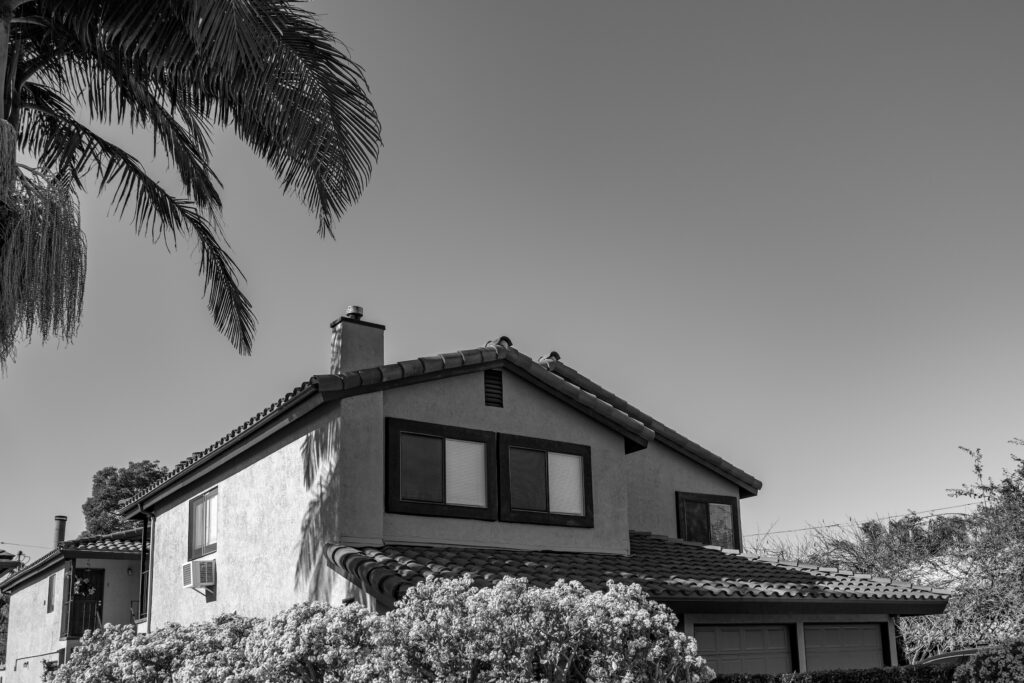Three residences all on the same block in University Heights define the scope of the housing crisis in Southern California. This is not a story about limited availability of units, as news media and political prognosticators regularly (and falsely) claim, but about rising prices driven by numerous market dynamics (such as emigrants or corporations paying cash) mixed with insanity that defies common sense.
The market bears what people are willing to pay and they seem all the more recklessly anxious to fall for fear-economics and the privilege of paying more, more, more.
The Humble House
Our story starts with a convergence of events, commencing on Dec. 2, 2021, when a 744-square-foot, 2-bedroom, one-bath house listed for $795,000. Four days later, the property switched to “pending sale” for $1.015 million. The sellers bought the place in July 2013 for $439,000. Their listing is a difference of $356,000—or 81 percent more than the purchase price eight years earlier.
But someone willingly would pay a heftier sum, following what presumably was a bidding war. The sale closed on December 23 for the pending price. Merry Christmas! The previous owners walk away with $576,000 more than they paid—a 131-percent increase. The buyers spent $220,000 over the asking price, or 28 percent more. Exterminators tented the place for termites today. Someone is moving in, or renovating, soon.
The Granny Flat
Yesterday, my wife saw that the freshly constructed granny flat on the adjacent property is listed for rent. That’s right: Next door. What a coincidence! The primary residence—a 660-square-foot, 2 bedroom, single-bath house—sold in April 2019 for $535,000. The new owners decided to fill most of the spacious backyard with the granny flat, which sits over a new, two-car garage.
Construction started sometime last year, proceeding at modest pace because of the SARS-CoV-2 (severe acute respiratory syndrome Coronavirus 2)/COVID-19 pandemic. Blame labor and building supply shortages. Oddly, the place proved ready for new occupants around the time the neighboring property’s sale closed.
The over-garage granny flat is 940-square-feet, 2 bedrooms and baths. Asking: $3,495 monthly—and there are already (at least) five applications! The rental listed 7 days ago.
The Condo
Six doors down, on the same side of the street on the same block, a second floor condo also is available to rent. The 1,000-square-foot, 2 beds and baths residence listed three days ago. I only discovered it today when researching the aforementioned granny flat. Rental history reveals almost all anyone needs to know about how far-flung from reality is the San Diego housing market in 2022 compared to pre-pandemic days.
As recently as September 2020, the place was available for $1,600 monthly. Then, following a modest renovation, a month later the owners jacked up the price to $2,450—later lowering to $2,250. One year since the last listing, the price jumped $1,000. That’s right—to $3,250, which is a 44-percent increase, but more than double the rent 16 months earlier. Yikes!
Here’s the thing, reminding that these three are all on the same block: Locally, the street isn’t regarded as one of the finer areas of University Heights. What would be considered the bigger, pricier homes are elsewhere. Instead, somewhat run-down El Cajon (e.g. The Boulevard) is the second cross-street away. It’s one of the dirtier, grittier, and noisier locations, with increasing crime and indigents. Hey, just being honest.
The Insanity
Who can afford these prices? That depends. According to San Diego government, the median household income in 2022 is $78,247. If you prefer average: $112,294. If you earned the median, the year’s rent ($39,000) for the condo would be 50 percent of your income—before taxes! You won’t be living there. Someone earning the six-figure comparable would pay out 34 percent of his or her monthly before-tax income. That’s more manageable.
Let’s continue with that $1.015 million house. I assume, based on the sale’s speed that the buyer paid cash. But let’s assume he or she financed. With 20 percent down (cough, cough $203,000), the monthly payment for mortgage, taxes, and insurance would be $4,385—assuming a 3.05-percent loan, fixed-rate for 30 years. That’s $52,620 per year, which approaches 100-percent of the median-earners take-home pay. Even that low, six-figure earner should find the costs burdensome, particularly when adding in all the others related to home ownership.
I don’t live in an upscale San Diego neighborhood and the street spotlighted is pleasant enough but by no measure a bastion of wealth. Yet recent rentals and home prices portend—or should I say pretend—to be something more.
I used Leica Q2 Monochrom to capture the Featured Image, which looks up to that second-floor condo. Vitals, aperture manually set: f/8, ISO 200, 1/400 sec, 28mm; 12:36 p.m. PST, today.
